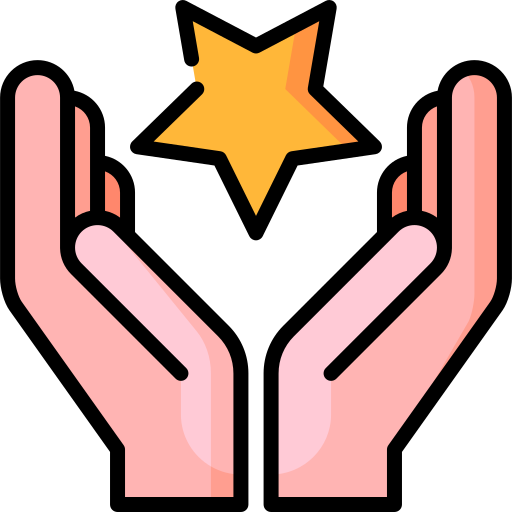Chronic pain is a persistent and debilitating condition that affects millions worldwide. It goes beyond the typical pain associated with an injury or illness, lingering for months or even years. Traditional approaches to managing chronic pain often focus solely on medication, which can provide temporary relief but may also lead to unwanted side effects and dependency. A holistic approach, on the other hand, considers the whole person – mind, body, and spirit – to address the root causes of pain and promote long-term well-being. This article explores the principles and practices of managing chronic pain holistically.
Understanding Chronic Pain
Before diving into holistic management strategies, it’s crucial to understand the nature of chronic pain. Unlike acute pain, which serves as a warning signal for immediate danger, chronic pain persists even after the initial injury or illness has healed. It can arise from various sources, including nerve damage, arthritis, fibromyalgia, and even psychological factors. The experience of chronic pain is highly individual, influenced by factors such as genetics, lifestyle, and emotional state.
Furthermore, chronic pain can significantly impact a person’s quality of life. It can lead to physical limitations, sleep disturbances, mood disorders, and social isolation. Managing chronic pain effectively requires a comprehensive approach that addresses both the physical and emotional aspects of the condition.
Common Types of Chronic Pain
- Neuropathic Pain: Arising from nerve damage, often described as burning, shooting, or stabbing pain.
- Musculoskeletal Pain: Affecting muscles, bones, and joints, common in conditions like arthritis and back pain.
- Inflammatory Pain: Caused by inflammation in the body, as seen in conditions like rheumatoid arthritis.
- Psychogenic Pain: Pain with no identifiable physical cause, often linked to psychological factors like stress and depression.
The Holistic Approach to Pain Management
A holistic approach to chronic pain management recognizes the interconnectedness of mind, body, and spirit. It emphasizes empowering individuals to take an active role in their own healing journey. Instead of solely relying on medication, holistic strategies aim to address the underlying causes of pain and promote overall well-being. This typically involves a combination of lifestyle modifications, complementary therapies, and psychological support.
Key Principles of Holistic Pain Management
- Individualized Care: Recognizing that each person’s experience of pain is unique, treatment plans are tailored to individual needs and preferences.
- Addressing Root Causes: Instead of simply masking symptoms, holistic approaches seek to identify and address the underlying causes of pain.
- Empowering the Individual: Individuals are encouraged to actively participate in their own care through self-management techniques and lifestyle modifications.
- Integrating Multiple Therapies: Combining various therapies, such as physical therapy, acupuncture, and mindfulness, to achieve optimal results.
- Focusing on Overall Well-being: Prioritizing physical, emotional, and spiritual well-being to enhance the body’s natural healing abilities.
Lifestyle Modifications for Pain Relief
Lifestyle plays a crucial role in managing chronic pain. Simple changes to daily habits can significantly reduce pain levels and improve overall quality of life.
Diet and Nutrition
A healthy diet can help reduce inflammation and support the body’s natural healing processes. Focus on consuming whole, unprocessed foods rich in fruits, vegetables, and omega-3 fatty acids. Limit processed foods, sugar, and saturated fats, which can exacerbate inflammation.
Research suggests that an anti-inflammatory diet can significantly reduce pain levels in individuals with chronic conditions like arthritis. Foods like berries, leafy greens, and fatty fish are particularly beneficial. Always consult with a healthcare professional or registered dietitian before making significant dietary changes.
Exercise and Movement
Regular exercise can help strengthen muscles, improve flexibility, and reduce pain. Choose low-impact activities like walking, swimming, or yoga, and gradually increase intensity and duration. It is important to listen to your body and avoid overexertion.
While exercise is beneficial, it’s crucial to start slowly and gradually increase activity levels. Pushing yourself too hard can worsen pain and lead to injuries. Consult with a physical therapist or healthcare professional to develop a safe and effective exercise plan.
Sleep Hygiene
Adequate sleep is essential for pain management. Chronic pain can disrupt sleep, leading to a vicious cycle of pain and insomnia. Practice good sleep hygiene by establishing a regular sleep schedule, creating a relaxing bedtime routine, and optimizing your sleep environment.
Some useful strategies are:
- Go to bed and wake up at the same time each day, even on weekends.
- Create a dark, quiet, and cool sleep environment.
- Avoid caffeine and alcohol before bed.
- Practice relaxation techniques like deep breathing or meditation.
Stress Management
Stress can exacerbate chronic pain by increasing muscle tension and inflammation. Implement stress-reducing techniques like meditation, deep breathing exercises, or spending time in nature. Engaging in enjoyable activities and connecting with loved ones can also help manage stress levels.
Complementary Therapies for Pain Relief
Complementary therapies can be used alongside conventional medical treatments to provide additional pain relief and improve overall well-being.
Acupuncture
Acupuncture involves inserting thin needles into specific points on the body to stimulate the nervous system and release endorphins, natural pain relievers. Studies have shown that acupuncture can be effective in managing various types of chronic pain, including back pain, neck pain, and osteoarthritis.
Massage Therapy
Massage therapy can help relax muscles, improve circulation, and reduce pain. Different types of massage, such as Swedish massage, deep tissue massage, and trigger point therapy, can be used to address specific pain conditions.
Yoga and Tai Chi
Yoga and Tai Chi are mind-body practices that combine physical postures, breathing techniques, and meditation. These practices can improve flexibility, balance, and strength, while also reducing stress and pain.
Mindfulness Meditation
Mindfulness meditation involves focusing on the present moment without judgment. It can help individuals become more aware of their pain and develop coping strategies to manage it. Mindfulness meditation has been shown to reduce pain intensity, improve mood, and enhance overall quality of life.
Herbal Remedies
Certain herbs, such as turmeric, ginger, and willow bark, have anti-inflammatory and pain-relieving properties. However, it’s important to consult with a healthcare professional before using herbal remedies, as they can interact with medications and may not be suitable for everyone.
Psychological Support for Chronic Pain
Chronic pain can significantly impact mental health, leading to depression, anxiety, and feelings of hopelessness. Psychological support is an essential component of holistic pain management.
Cognitive Behavioral Therapy (CBT)
CBT is a type of therapy that helps individuals identify and change negative thought patterns and behaviors that contribute to pain. It can help individuals develop coping strategies, manage stress, and improve their overall quality of life.
Acceptance and Commitment Therapy (ACT)
ACT focuses on accepting pain rather than fighting it. It helps individuals develop a sense of psychological flexibility and live a meaningful life despite their pain.
Support Groups
Connecting with others who understand chronic pain can provide emotional support and reduce feelings of isolation. Support groups offer a safe space to share experiences, learn coping strategies, and build a sense of community.
Creating a Holistic Pain Management Plan
Developing a holistic pain management plan requires a collaborative approach involving healthcare professionals, complementary therapists, and the individual themselves.
Steps to Creating a Plan
- Consult with Healthcare Professionals: Work with your doctor, physical therapist, and other healthcare providers to assess your pain and develop a comprehensive treatment plan.
- Identify Underlying Causes: Explore the potential root causes of your pain, such as nerve damage, inflammation, or psychological factors.
- Set Realistic Goals: Establish achievable goals for pain management, such as reducing pain levels, improving function, and enhancing overall well-being.
- Implement Lifestyle Modifications: Make changes to your diet, exercise routine, sleep habits, and stress management techniques.
- Explore Complementary Therapies: Consider incorporating complementary therapies like acupuncture, massage, or yoga into your treatment plan.
- Seek Psychological Support: If needed, seek psychological support from a therapist or counselor to address the emotional impact of chronic pain.
- Monitor Progress and Adjust Plan: Regularly monitor your progress and adjust your treatment plan as needed based on your response.
Conclusion
Managing chronic pain holistically offers a comprehensive and sustainable approach to pain relief and improved quality of life. By addressing the interconnectedness of mind, body, and spirit, individuals can empower themselves to take an active role in their own healing journey. While medication may play a role in managing pain, a holistic approach emphasizes lifestyle modifications, complementary therapies, and psychological support to address the root causes of pain and promote overall well-being. With dedication and a collaborative approach, individuals with chronic pain can find lasting relief and reclaim their lives.
Remember to always consult with qualified healthcare professionals before starting any new treatment plan, especially if you have underlying medical conditions or are taking medications. This article is for informational purposes only and should not be considered medical advice.








